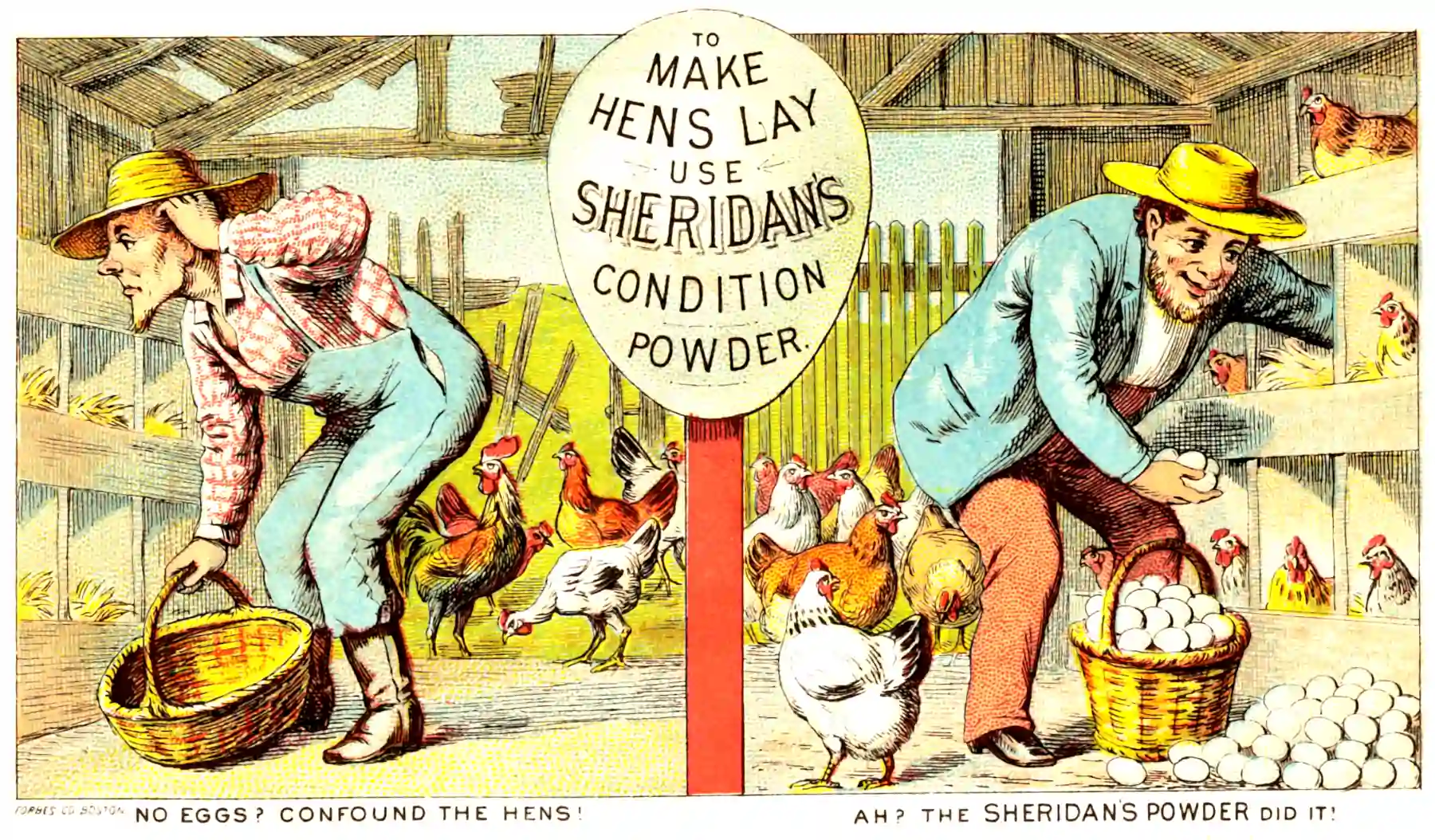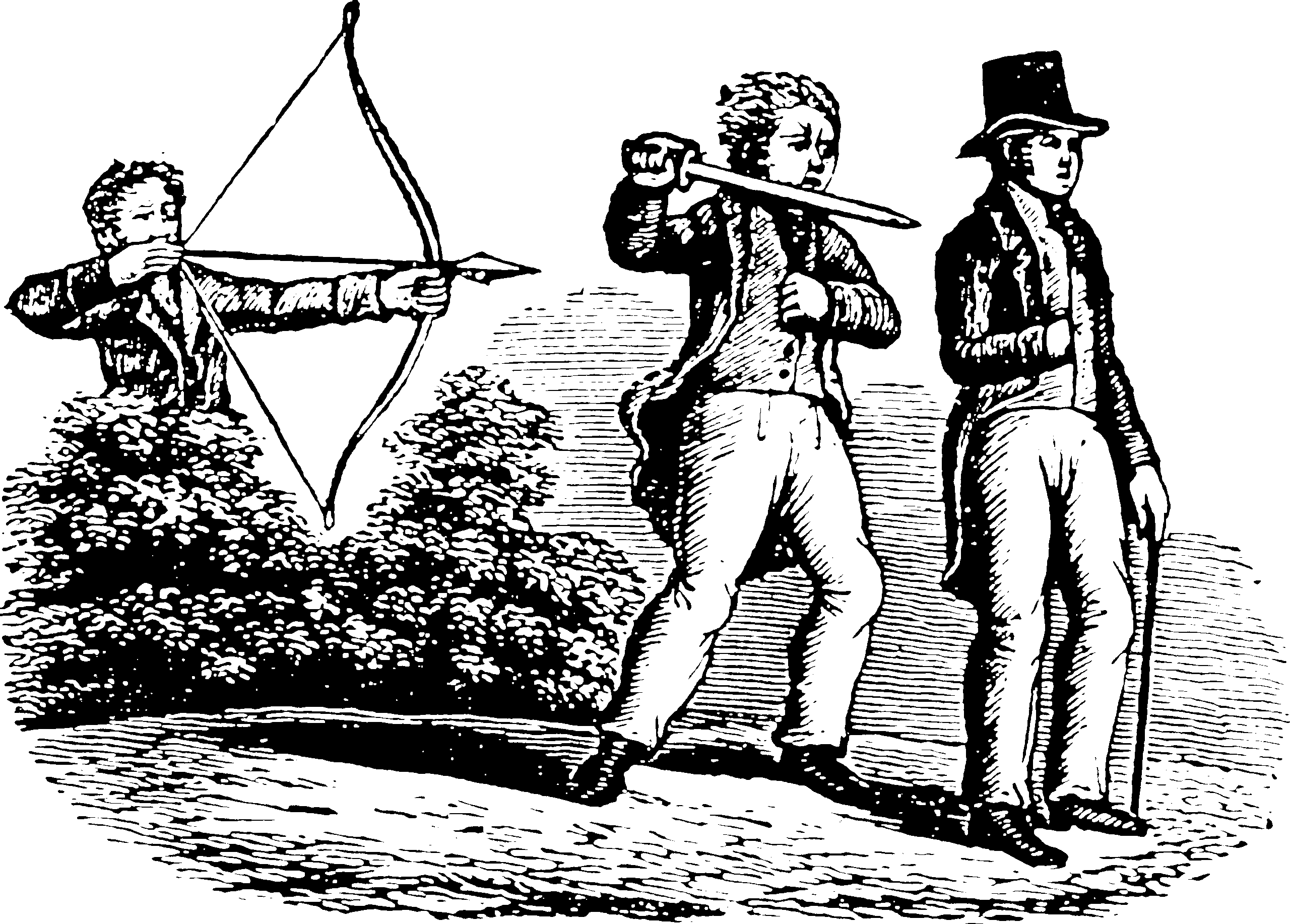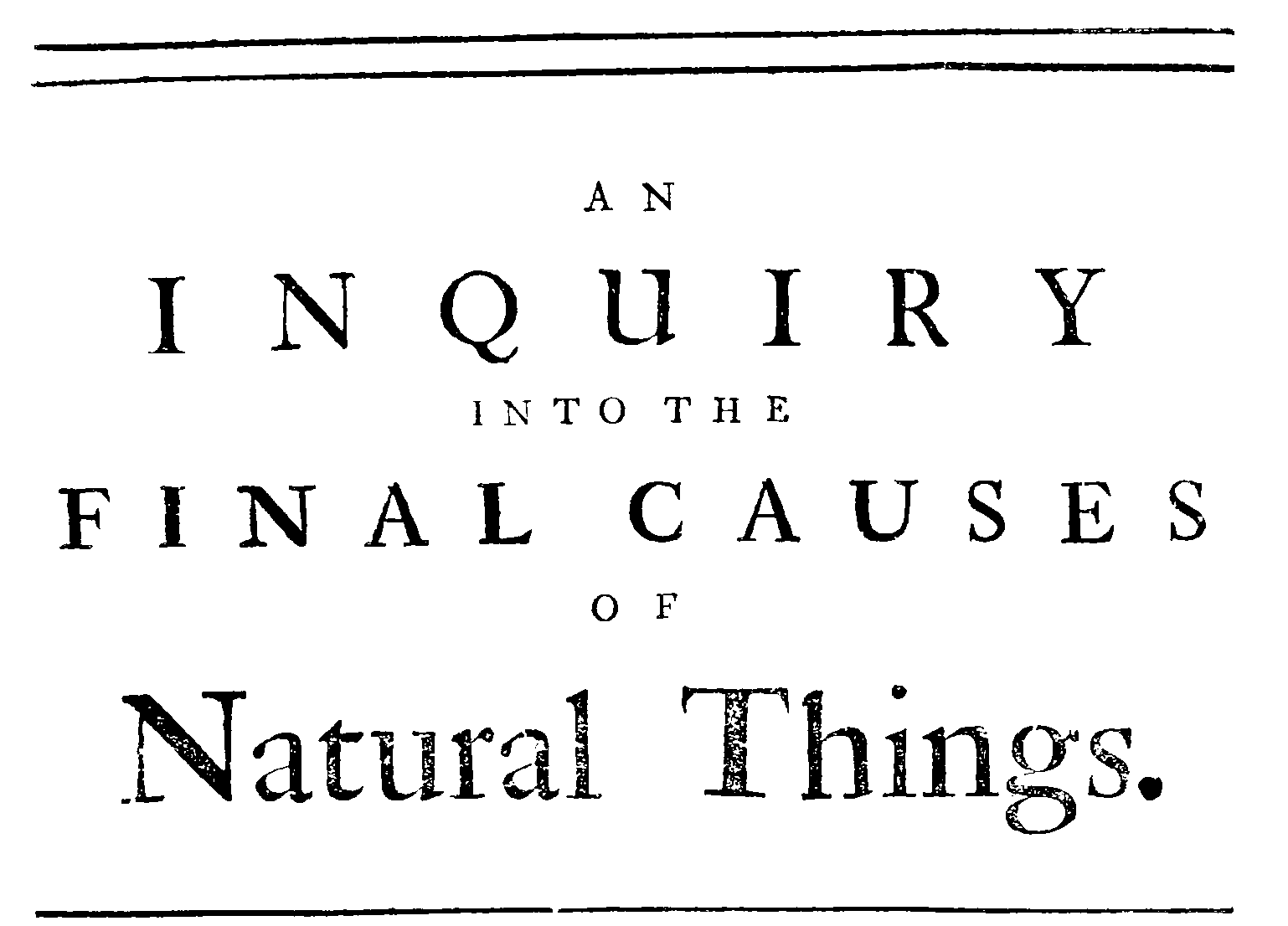Allen, Barrett, Horsman, et al. 2017.
“Quantum Common Causes and Quantum Causal Models.” Physical Review X.
Arjovsky, Bottou, Gulrajani, et al. 2020.
“Invariant Risk Minimization.”
Bareinboim, and Pearl. 2016.
“Causal Inference and the Data-Fusion Problem.” Proceedings of the National Academy of Sciences.
Besserve, Mehrjou, Sun, et al. 2019.
“Counterfactuals Uncover the Modular Structure of Deep Generative Models.” In
arXiv:1812.03253 [Cs, Stat].
Blom, Bongers, and Mooij. 2020.
“Beyond Structural Causal Models: Causal Constraints Models.” In
Uncertainty in Artificial Intelligence.
Blom, and Mooij. 2020. “Robust Model Predictions via Causal Ordering.” In.
Bonchi, Gullo, Mishra, et al. 2018.
“Probabilistic Causal Analysis of Social Influence.” In
Proceedings of the 27th ACM International Conference on Information and Knowledge Management. CIKM ’18.
Bottou, Peters, Quiñonero-Candela, et al. 2013.
“Counterfactual Reasoning and Learning Systems.” arXiv:1209.2355 [Cs, Math, Stat].
Bright, Malinsky, and Thompson. 2016.
“Causally Interpreting Intersectionality Theory.” Philosophy of Science.
Brito, and Pearl. 2002.
“A New Identification Condition for Recursive Models With Correlated Errors.” Structural Equation Modeling: A Multidisciplinary Journal.
———. 2012.
“Generalized Instrumental Variables.” arXiv:1301.0560 [Cs].
Brodersen, Gallusser, Koehler, et al. 2015.
“Inferring Causal Impact Using Bayesian Structural Time-Series Models.” The Annals of Applied Statistics.
Bühlmann. 2013.
“Causal Statistical Inference in High Dimensions.” Mathematical Methods of Operations Research.
Bühlmann, Kalisch, and Meier. 2014.
“High-Dimensional Statistics with a View Toward Applications in Biology.” Annual Review of Statistics and Its Application.
Chaves, Lemos, and Pienaar. 2018.
“Causal Modeling the Delayed-Choice Experiment.” Physical Review Letters.
Chen, and Pearl. 2012. “Regression and Causation: A Critical Examination of Econometric Textbooks.”
Cornish, Taufiq, Doucet, et al. 2023.
“Causal Falsification of Digital Twins.”
Correa, and Bareinboim. 2020.
“A Calculus for Stochastic Interventions:Causal Effect Identification and Surrogate Experiments.” Proceedings of the AAAI Conference on Artificial Intelligence.
Cunningham. 2021. Causal Inference: The Mixtape.
Duvenaud, Eaton, Murphy, et al. 2010.
“Causal Learning Without DAGs.” In
NIPS Causality: Objectives and Assessment.
Eichler. 2001.
“Granger-Causality Graphs for Multivariate Time Series.” Granger-Causality Graphs for Multivariate Time Series.
Elwert. 2013.
“Graphical Causal Models.” In
Handbook of Causal Analysis for Social Research. Handbooks of Sociology and Social Research.
Entner, Hoyer, and Spirtes. 2013.
“Data-Driven Covariate Selection for Nonparametric Estimation of Causal Effects.” In
Proceedings of the Sixteenth International Conference on Artificial Intelligence and Statistics.
Ernest, and Bühlmann. 2014.
“Marginal Integration for Fully Robust Causal Inference.” arXiv:1405.1868 [Stat].
Fixx. 1977. Games for the superintelligent.
Foreman-Mackey, Montet, Hogg, et al. 2015.
“A Systematic Search for Transiting Planets in the K2 Data.” The Astrophysical Journal.
Gelman. 2010.
“Causality and Statistical Learning.” American Journal of Sociology.
Gelman, and Meng. 2004. Applied Bayesian Modeling and Causal Inference From Incomplete-Data Perspectives.
Geng, Liu, Liu, et al. 2019.
“Evaluation of Causal Effects and Local Structure Learning of Causal Networks.” Annual Review of Statistics and Its Application.
Hansen, and Sokol. 2014.
“Causal Interpretation of Stochastic Differential Equations.” Electronic Journal of Probability.
Hernán, Miguel, and Robins. 2019a. Causal Inference Vol 3.
———. 2019b. Causal Inference Vol 2.
———. 2019c. Causal Inference Vol 1.
Hernán, Miguel A, and Robins. 2020. Causal Inference: What If.
Hinton, Osindero, and Bao. 2005.
“Learning Causally Linked Markov Random Fields.” In
Proceedings of the 10th International Workshop on Artificial Intelligence and Statistics.
Hoyer, Janzing, Mooij, et al. 2009.
“Nonlinear Causal Discovery with Additive Noise Models.” In
Advances in Neural Information Processing Systems 21.
Hyttinen, Eberhardt, and Järvisalo. n.d.
“Do-Calculus When the True Graph Is Unknown.”
Imbens, and Menzel. 2021.
“A Causal Bootstrap.” The Annals of Statistics.
Janzing, and Schölkopf. 2010.
“Causal Inference Using the Algorithmic Markov Condition.” IEEE Transactions on Information Theory.
Johansson, Fredrik, Shalit, and Sontag. 2016.
“Learning Representations for Counterfactual Inference.” In
International Conference on Machine Learning.
Johansson, Fredrik D., Shalit, and Sontag. 2018.
“Learning Representations for Counterfactual Inference.” arXiv:1605.03661 [Cs, Stat].
Jordan, Michael Irwin. 1999. Learning in Graphical Models.
Jordan, Michael I., and Weiss. 2002a.
“Graphical Models: Probabilistic Inference.” The Handbook of Brain Theory and Neural Networks.
———. 2002b.
“Probabilistic Inference in Graphical Models.” Handbook of Neural Networks and Brain Theory.
Kalainathan, Goudet, and Dutta. 2020.
“Causal Discovery Toolbox: Uncovering Causal Relationships in Python.” Journal of Machine Learning Research.
Kilbertus, Rojas Carulla, Parascandolo, et al. 2017.
“Avoiding Discrimination Through Causal Reasoning.” In
Advances in Neural Information Processing Systems 30.
Kleinberg. 2012. Causality, Probability, and Time.
———. 2015. Why: A Guide to Finding and Using Causes.
Kohavi, Tang, and Xu. 2020. Trustworthy Online Controlled Experiments: A Practical Guide to A/B Testing.
Kohler, Kreuter, and Stuart. 2019.
“Nonprobability Sampling and Causal Analysis.” Annual Review of Statistics and Its Application.
Koller, and Friedman. 2009. Probabilistic Graphical Models : Principles and Techniques.
Lauritzen, Steffen L. 1996. Graphical Models. Oxford Statistical Science Series.
———. 2000.
“Causal Inference from Graphical Models.” In
Complex Stochastic Systems.
Lauritzen, S. L., and Spiegelhalter. 1988.
“Local Computations with Probabilities on Graphical Structures and Their Application to Expert Systems.” Journal of the Royal Statistical Society. Series B (Methodological).
———. n.d. “Causal Effect Identifiability Under Partial-Observability.”
Locatello, Bauer, Lucic, et al. 2019.
“Challenging Common Assumptions in the Unsupervised Learning of Disentangled Representations.” In
Proceedings of the 36th International Conference on Machine Learning.
Lopez-Paz, Nishihara, Chintala, et al. 2016.
“Discovering Causal Signals in Images.” arXiv:1605.08179 [Cs, Stat].
Louizos, Shalit, Mooij, et al. 2017.
“Causal Effect Inference with Deep Latent-Variable Models.” In
Advances in Neural Information Processing Systems 30.
Maathuis, and Colombo. 2013.
“A Generalized Backdoor Criterion.” arXiv Preprint arXiv:1307.5636.
Marbach, Prill, Schaffter, et al. 2010.
“Revealing Strengths and Weaknesses of Methods for Gene Network Inference.” Proceedings of the National Academy of Sciences.
Massidda, Geiger, Icard, et al. 2023.
“Causal Abstraction with Soft Interventions.” In
Proceedings of the Second Conference on Causal Learning and Reasoning.
Meinshausen. 2018.
“Causality from a Distributional Robustness Point of View.” In
2018 IEEE Data Science Workshop (DSW).
Mihalkova, and Mooney. 2007.
“Bottom-up Learning of Markov Logic Network Structure.” In
Proceedings of the 24th International Conference on Machine Learning.
Morgan, and Winship. 2015. Counterfactuals and Causal Inference.
Murphy. 2012. Machine learning: a probabilistic perspective. Adaptive computation and machine learning series.
Ng, Fang, Zhu, et al. 2020.
“Masked Gradient-Based Causal Structure Learning.” arXiv:1910.08527 [Cs, Stat].
Ng, Zhu, Chen, et al. 2019.
“A Graph Autoencoder Approach to Causal Structure Learning.” In
Advances In Neural Information Processing Systems.
Nilsson, Bonander, Strömberg, et al. 2021.
“A Directed Acyclic Graph for Interactions.” International Journal of Epidemiology.
Ormaniec, Sussex, Lorch, et al. 2024.
“Standardizing Structural Causal Models.” In.
Pearl. 1982.
“Reverend Bayes on Inference Engines: A Distributed Hierarchical Approach.” In
Proceedings of the Second AAAI Conference on Artificial Intelligence. AAAI’82.
———. 1998.
“Graphical Models for Probabilistic and Causal Reasoning.” In
Quantified Representation of Uncertainty and Imprecision. Handbook of Defeasible Reasoning and Uncertainty Management Systems.
———. 2008. Probabilistic reasoning in intelligent systems: networks of plausible inference. The Morgan Kaufmann series in representation and reasoning.
———. 2009b. Causality: Models, Reasoning and Inference.
———. 2010.
“The Foundations of Causal Inference.” Sociological Methodology.
———. 2012. “The Do-Calculus Revisited Judea Pearl Keynote Lecture, August 17, 2012 UAI-2012 Conference, Catalina, CA.” Edited by Nando de Freitas and Kevin Murphy.
Pearl, Glymour, and Jewell. 2016. Causal Inference in Statistics: A Primer.
Peters, Janzing, and Schölkopf. 2017.
Elements of Causal Inference: Foundations and Learning Algorithms. Adaptive Computation and Machine Learning Series.
Peters, Mooij, Janzing, et al. 2014. “Causal Discovery with Continuous Additive Noise Models.” The Journal of Machine Learning Research.
Raginsky. 2011.
“Directed Information and Pearl’s Causal Calculus.” In
2011 49th Annual Allerton Conference on Communication, Control, and Computing (Allerton).
Rakesh, Guo, Moraffah, et al. 2018.
“Linked Causal Variational Autoencoder for Inferring Paired Spillover Effects.” In
Proceedings of the 27th ACM International Conference on Information and Knowledge Management. CIKM ’18.
Richardson, Thomas, and Spirtes. 2002.
“Ancestral Graph Markov Models.” Annals of Statistics.
Robins. 1997.
“Causal Inference from Complex Longitudinal Data.” In
Latent Variable Modeling and Applications to Causality. Lecture Notes in Statistics.
Rothenhäusler, Meinshausen, Bühlmann, et al. 2020.
“Anchor Regression: Heterogeneous Data Meets Causality.” arXiv:1801.06229 [Stat].
Rubenstein, Bongers, Schölkopf, et al. 2018.
“From Deterministic ODEs to Dynamic Structural Causal Models.” In
Uncertainty in Artificial Intelligence.
Rubenstein, Weichwald, Bongers, et al. 2017.
“Causal Consistency of Structural Equation Models.” In
Uncertainty in Artificial Intelligence.
Sauer, and VanderWeele. 2013.
Use of Directed Acyclic Graphs.
Schölkopf. 2022.
“Causality for Machine Learning.” In
Probabilistic and Causal Inference: The Works of Judea Pearl.
Schölkopf, Hogg, Wang, et al. 2015.
“Removing Systematic Errors for Exoplanet Search via Latent Causes.” arXiv:1505.03036 [Astro-Ph, Stat].
Schölkopf, Janzing, Peters, et al. 2012.
“On Causal and Anticausal Learning.” In
ICML 2012.
Schölkopf, Locatello, Bauer, et al. 2021.
“Toward Causal Representation Learning.” Proceedings of the IEEE.
Schulam, and Saria. 2017.
“Reliable Decision Support Using Counterfactual Models.” In
Proceedings of the 31st International Conference on Neural Information Processing Systems. NIPS’17.
Shpitser, and Pearl. 2008. “Complete Identification Methods for the Causal Hierarchy.” The Journal of Machine Learning Research.
Shrier, and Platt. 2008.
“Reducing Bias Through Directed Acyclic Graphs.” BMC Medical Research Methodology.
Smith, David A., and Eisner. 2008.
“Dependency Parsing by Belief Propagation.” In
Proceedings of the Conference on Empirical Methods in Natural Language Processing.
Smith, Bonnie, Ogburn, McGue, et al. 2020.
“Causal Effects in Twin Studies: The Role of Interference.” arXiv:2007.04511 [Stat].
Spirtes, Glymour, and Scheines. 2001.
Causation, Prediction, and Search. Adaptive Computation and Machine Learning.
Subbaswamy, Schulam, and Saria. 2019.
“Preventing Failures Due to Dataset Shift: Learning Predictive Models That Transport.” In
The 22nd International Conference on Artificial Intelligence and Statistics.
Suzuki, Shinozaki, and Yamamoto. 2020.
“Causal Diagrams: Pitfalls and Tips.” Journal of Epidemiology.
Textor, Idelberger, and Liśkiewicz. 2015.
“Learning from Pairwise Marginal Independencies.” arXiv:1508.00280 [Cs].
Textor, and Liśkiewicz. 2011.
“Adjustment Criteria in Causal Diagrams: An Algorithmic Perspective.” In
Proceedings of the Twenty-Seventh Conference on Uncertainty in Artificial Intelligence. UAI’11.
Tschantz, Sen, and Datta. 2019.
“Differential Privacy as a Causal Property.” arXiv:1710.05899 [Cs].
Tu, Zhang, Ackermann, et al. 2018.
“Causal Discovery in the Presence of Missing Data.” arXiv:1807.04010 [Cs, Stat].
van der Zander, and Liśkiewicz. 2016.
“Separators and Adjustment Sets in Markov Equivalent DAGs.” In
Proceedings of the Thirtieth AAAI Conference on Artificial Intelligence. AAAI’16.
van der Zander, Liśkiewicz, and Textor. 2014.
“Constructing Separators and Adjustment Sets in Ancestral Graphs.” In
Proceedings of the UAI 2014 Conference on Causal Inference: Learning and Prediction - Volume 1274. CI’14.
van der Zander, Textor, and Liskiewicz. 2015.
“Efficiently Finding Conditional Instruments for Causal Inference.” In
Proceedings of the 24th International Conference on Artificial Intelligence. IJCAI’15.
Vansteelandt, Bekaert, and Claeskens. 2012.
“On Model Selection and Model Misspecification in Causal Inference.” Statistical Methods in Medical Research.
Visweswaran, and Cooper. 2014.
“Counting Markov Blanket Structures.” arXiv:1407.2483 [Cs, Stat].
Wang, Dun, Hogg, Foreman-Mackey, et al. 2017.
“A Pixel-Level Model for Event Discovery in Time-Domain Imaging.” arXiv:1710.02428 [Astro-Ph].
Wong. 2020.
“Computational Causal Inference.” arXiv:2007.10979 [Cs, Stat].
Wright. 1934.
“The Method of Path Coefficients.” The Annals of Mathematical Statistics.
Yadav, Prunelli, Hoff, et al. 2016.
“Causal Inference in Observational Data.” arXiv:1611.04660 [Cs, Stat].
Yang, Liu, Chen, et al. 2021.
“CausalVAE: Disentangled Representation Learning via Neural Structural Causal Models.” In
2021 IEEE/CVF Conference on Computer Vision and Pattern Recognition (CVPR).
Yedidia, Freeman, and Weiss. 2003.
“Understanding Belief Propagation and Its Generalizations.” In
Exploring Artificial Intelligence in the New Millennium.
Zheng, Aragam, Ravikumar, et al. 2018.
“DAGs with NO TEARS: Continuous Optimization for Structure Learning.” In
Advances in Neural Information Processing Systems 31.





